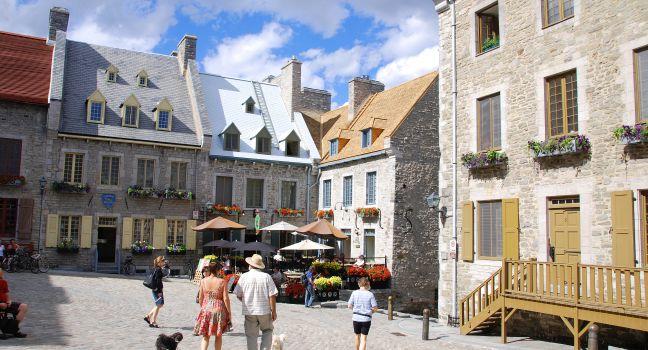Place Royale

Place Royale is where Samuel de Champlain founded the City of Québec in 1608; more than 400 years and several iterations later, this cobblestone square is still considered to be the cradle of French-speaking North America. Flanked on one side by the oldest stone church in North America, Église Notre-Dame-des-Victoires, and on the other by houses with steep Normandy-style roofs, dormer windows, and chimneys, once the homes of wealthy merchants, Place Royale is the epicenter of Old Québec. Until 1686 the area was called Place du Marché, but its name changed when a bust of Louis XIV was placed at its center. During the late 1600s and early 1700s, when Place Royale was continually under threat of British attack, the colonists moved progressively higher to safer quarters atop the cliff in Upper Town. After the French colony fell to British rule in 1759, Place Royale flourished again with shipbuilding, logging, fishing, and fur trading. The Fresque des Québécois, a 4,665-square-foot trompe-l'oeil mural depicting 400 years of Québec's history, is to the east of the square, at the corner of rue Notre-Dame and côte de la Montagne.





